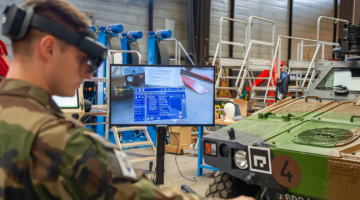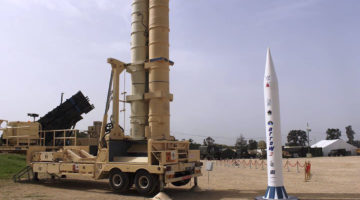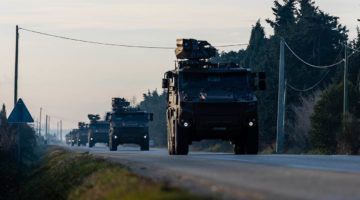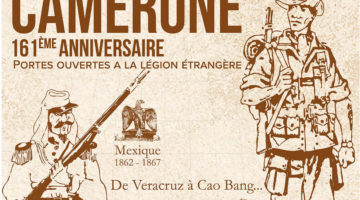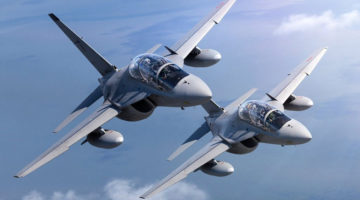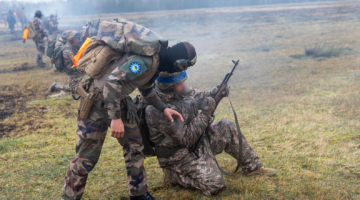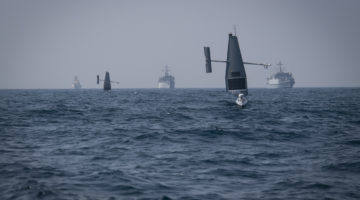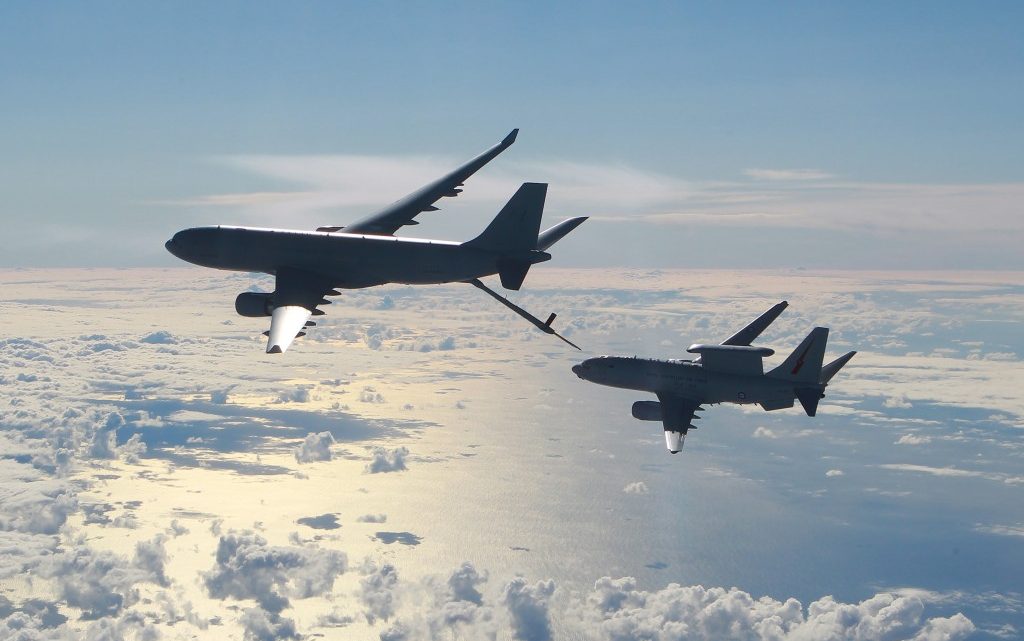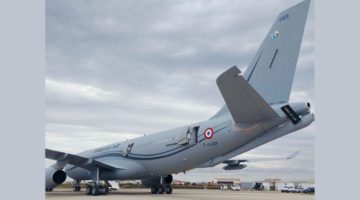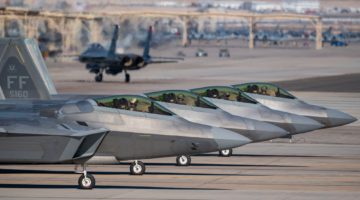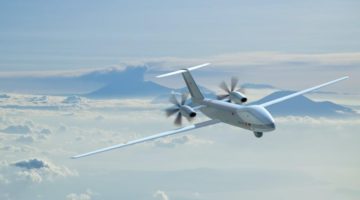Reportage en Australie – By Robbin Laird (a version of this article was published on September 15th, 2015 at www.sldforum.com)
In 2008, the USAF selected the Airbus A300MRTT tanker. It was a clear winner from the standpoint of what the USAF wanted from a tanker. But politics and the anomalies of the US acquisition process intruded and the next Administration picked a Boeing tanker, one which has yet to enter the USAF inventory.
For the USAF leadership, the Airbus tanker was clearly better, with its size and its ability to hold fuel in its wings, the potential for using the space on the aircraft, inside and out was especially compelling, notably with the introduction of the F-22 and the coming of the F-35 and its data rich generating capabilities. The tanker could become part of the battlespace and work with fifth generation aircraft in a compelling manner.
There was much comment generated by the GAO, the press, analysts and pundits on that selection and that competition. But the reality is the reality. It is not just about points of view. The A330 tanker has won every competition worldwide since the loss in the United States. And the Australians, as the lead nation, have already demonstrated what a capable platform it is, and a centerpiece for the global reach of the RAAF.
With the USAF not becoming the lead nation for the new Airbus tanker, that task fell to Australia. The Aussies normal acquisition path is to buy a foreign product, and work with the service or services who have put that platform into practice, and then work the platform into operations leveraging the work of the lead or operating force using the platform.
This was different. The RAAF now was in the lead and worked with Airbus to bring the tanker into operation. As Air Commodore Gary Martin, now the air attaché in Washington from the Australian government, and then head of the Air Lift Group commented:
During my time at the Air Lift Group we took ownership of the KC-30A and worked with Airbus Military and Qantas Defence to craft an operational capability for the fleet. The Chief of Air Force of the RAAF was impatient to add the tanking capability to the fleet as we had ceased our original B-707 tanking back in 2008. We were thin on personnel with tanking experience and knew that we would need to ramp up this capability as soon as possible.And the new tanker was much larger than our legacy aircraft, so we realised that there would be challenges associated with our first of series aircraft fleet. We were a demanding customer because of the pressures to get the KC-30A into operation.
Overall, our Chief was looking for the ability of the RAAF to deploy a sustainable insertion package with the C-17s and KC-30As moving out together to bring significant capability to an area of interest. Because the KC-30A holds the fuel for its AAR in its wings, we can carry personnel and their baggage onboard the aircraft. This means that the C-17 can carry the heavy equipment; the KC-30A the fuel for AAR and the personnel to operate the capabilities when landing in an area of operation. This combined capability is an essential force package for operating at a distance for the Australian forces. But to get to that point has taken time.
The aircraft is a software-enabled aircraft and we had challenges to deal with to get the entire package to work operationally. So all of our processes in the first year were aimed at getting the aircraft safely airborne, conducting our operational training and evaluation of the squadron members. We weren’t using the boom at this stage, just the pods and bringing them into operational service. And as you know, we started with the process of getting the hose and drogue system to work with our Hornets, and then have moved onto the boom. We clearly see both for our own use and working with coalition partners. Having a tanker that can do both and can refuel from such a large tanker reserve of fuel is a huge operational advantage for us.
Another priority was to get the whole logistical system to kick in. Initially, we had just taken delivery of a limited spares package and were the first nation to use the aircraft. So there was no experience with mean failure rates of parts and other data important to establishing a functioning logistics system. But the working relationship we had with Qantas Defence and Airbus Military allowed us to work through the challenges to get where we are today. After we established a good workflow to deal with any problems evident as we starting using the aircraft, the 24-hour work flow between Spain and Australia worked to our advantage.
We had Airbus Military, and RAAF personnel in both Australia and Spain. We would identify problems and craft partial solutions and then send those by electronic means to Spain where the team would then work on them while we slept; We would then be able the next day to take their solution set and continue to work on it, and then we could send at the end of our work day our work on the solution set, etc. It was a lot of coordination. It took us two-and-a-half years to have a stabilized tanking process with the RAAF and fighter force and for them to integrate with our tanker aircraft.
During a visit to the KC-30A squadron in March 2014, the squadron was working five aircraft into the squadron, and preparing the boom for entry into service. In that interview, the effort to certify the tanker with other nations, and the experience to date in supporting Aussie aircraft on deployment to exercises was a focus of attention.
Fast forward to the Fall of 2015, and the KC-30A, along with the Wedgetail, and the Super Hornets, all deploy to the Middle East for what the Aussies call Operation Okra, the effort to deal with ISIS.
And here the operational experience of the new capabilities – the Wedgetail and the KC-30A – have clearly demonstrated the value of the approach followed by the RAAF of getting the new platforms into the hands of the warfighters and letting the warfighters shape the way ahead as the platforms finish what in the US would consider to still be a procurement process.
As the Chief of Staff of the RAAF, Air Marshal Davies put it:
We put these assets in the hands of the warfighter to use and to determine what systems needed to be further developed in order to achieve the operational readiness, which the warfighters actually sought. Both platforms took time to evolve to the point where we could effectively use them; but we put them into the hands of the warfighters more rapidly than traditional procurements approaches would allow.
This is certainly part of what we mean by Plan Jericho – let the warfighters have a decisive say on what is needed from an operational standpoint, in terms of what the fleet can deliver rather than simply upgrading individual platforms organically. And getting into operations is crucial in terms of operator confidence and coalition capabilities.
With the Wedgetail deployed, allies got used to it and considered it a very reliable asset and the radar performance to be extraordinary. Without that operational confidence, the asset will not be used as often or as effectively.
We see this as part of the Plan Jericho approach – get into the hands of the operators to determine what capabilities are best next and from which platform?
What does a .02DB Delta on a radar range mean for an operator? I don’t know. Let’s give it to the operators and find out. And that’s what we’ve done.
During a visit to Australia in August 2015, there was a chance to get updates on the KC-30A and its role within the RAAF from a number of senior leaders of the RAAF. Their perspectives on actual operational deployment validated the expectations of the USAF leadership when they selected the tanker in 2008. The reality is the reality.
The initial perspective was provided by Air Marshal Davies who provided his perspective on the Middle East deployment and its ongoing impact on the RAAF.
We certainly have deployed fighters and air lifters in exercises and operations. But this is the first time we have taken an integrated air package to an operation. It is the first operational experience for both the KC-30A and the Wedgetail and the first time the Super Hornets operated (outside of Red Flag) with F-22s. The Wedgetail operating with the tanker affected the scope of operation of each as well.
Historically, we operate tankers in assigned tanker tracks. With the communications and other links inside the tanker and with the ability of the Wedgetail to clear the way for the flexible operations, the tanker could move closer to where fighters in operation were most likely to move for refueling. This means that you move yourself 60 nautical miles further north because the fighters you’re about to get next need to travel 100 miles to get to you. You could make it 40 miles and stay on station for another ten minutes. This meant getting the job done more rapidly; and reduced the fuel burn on the fighters as well.
This operational shift was facilitated by the tanker not simply acting as a flying gas can in a pre-positioned location but able to operate as a mobile combat asset to support the strike force. Something as simple as air-to-air refueling has been simple because it’s a track at a time at an altitude with a frequency and an upload. We’re saying we can make it more complicated with the right information and be much more effective in the battle space because of situational awareness.
The entry into service of the KC-30A led to a name change for the Air Lift Squadron to that of the Air Mobility Squadron. The first commander of the Air Mobility Squadron was then Air Commodore McDonald who is now the Deputy Chief of Staff of the RAAF.
In an earlier interview, when then Air Commodore McDonald, the impact of the KC-30A as seen from the perspective of January 2015 was highlighted :
Operation Okra has accelerated the maturing process of the KC-30A. At the end of 2013, the squadron was transferred from a project focused Transition Team to Number 86 Wing – and in doing so was placed directly into the hands of the war fighter. In 2014 the Wing, in conjunction with the project office, addressed the training and key operational issues that were preventing the full utilization of the KC-30A. The shift in operational focus, as a result of transferring the KC-30A to the Wing, is reflected in the increase in AAR from 40% to 75%.
The deployment to the Middle East has also accelerated the certification of aircraft able to be tanked by the KC-30A. In three months, we have dramatically increased the number of aircraft certified. This would not have happened without the press of events and the operational tempo associated with the deployment. It is the tanker of choice in Iraq we are being told by coalition partners.
In a follow-up interview in his office in Canberra, the Air Vice Marshal provided an update on the KC-30A and the ongoing operations in the Middle East.
The RAAF has deployed a single KC-30A to the Middle East operation but that single aircraft has delivered close to 30 million pounds of fuel since its arrival in late Fall 2014. The aircraft has only needed a small technical footprint, some 10 technicians to deliver a mission success rate of around 95%. When you introduce a new platform like the KC-30A, you need to make sure you are not doing so under a legacy mindset. You need to test your mindset in real operations and then draw your conclusions as to the best way to maintain that aircraft. Once tested and verified you then need to shift your older maintenance approach to a new one, and subsequently reshape your workforce. This does not happen right away; it is a process that will take five to seven years see fully mature. Nothing in the personnel space happens quickly, particularly when you must adapt to such a change.
The technical workforce changes we see happening in the KC-30A will be seen in the workforces of any capability we introduce, the P-8A and F-35 are other examples. In other words, we need to reshape our workforce to optimize the new capabilities that we are introducing, so that we aren’t stuck with a legacy of the past. It’s not that we don’t value our maintenance personnel, they are key to our success on any operation. However, we must acknowledge the significant advances in engineering that have occurred, and therefore reshape the balance of air maintenance personnel inside air force.
(…) We are adding [to our tanker fleet ]two additional aircraft to our current fleet of five. The two aircraft were purchased from the Qantas 330 fleet. One of the two is already in Spain being modified. (…) We are a part of the very successful C-17 sustainment system and I would like to see a similar model bought in for the KC-30A. But what first needs to be worked out is how to tap into the commercial parts pool for the global commercial A330 fleet. Right now the military certification of the KC-30A does not readily translate into the commercial certification of a A330 so that even though the parts are often the same we cannot tap into the commercial parts pool. Obviously, this makes little sense. It’s blindingly obvious, but sometimes you have to be quite innovative to make that blinding obvious come into an executable outcome. We can have a KC-30A parked on the tarmac next to a group of A330s and know they have the parts we need in their repair and support bays but we cannot access them. We need to solve this one.
[As the lead nation on the KC-30A], 9…) it was a challenge getting the KC-30A into service, but the results are there for all to see, particularly in the Middle East. The Singaporeans talked with us at length about the aircraft and we provided them with our experiences associated with the program and aircraft. I am aware that the success of the Australian program fed into their own decision as it did in South Korea. The thing that’s sometimes missed with being a lead customer on the KC30 means you must also forge a path for air to air refueling clearances. Without them it is just a transport aircraft and useless to the fight. Clearances are about enabling the tanker fleet to operate in a global context and thereby contributing meaningfully to coalition operations. We are well underway with clearances, which then other global users can simply draw upon. For example, Singapore is obviously watching us closely as we move into F-35 clearances the latter part of this year, because for Singapore when their tanker is delivered there will be a JSF clearance already taken care of. We are working very hard to get as many clearances for the KC30A as possible, as such we’re working towards at the C-17 in the second quarter of 2016. And then in the third, fourth quarter we’re looking at P8. With Singapore and South Korea operating the KC-30A as well, means that we can mass capabilities in an area. Operating in the Middle East also allows us to become more and more comfortable and flexible working with other countries using our platform.
Interviews with the Air Commander Australia and of the Air Combat Group, also highlighted how the tanker affected operations of the RAAF and the allies, including the USMC in the Middle East. As the Air Commander Australia, Air Vice Marshal Turnbull put it:
Question: Your chief of staff has described in his interview how the tankers are adjusting their operations to the fighters and that these adjustments are driven by increased connectivity in the battlespace and cited this as an interesting step forward. How would you describe this evolution?
Air Vice Marshal Turnbull: It is important. The way that we’re using the tankers is very much an innovation generated by our tanker pilots. They are driving that change, not so much being driven. That was the really pleasing part about how they are operating in the battle space; they saw a need and worked with the E7 (Wedgetail AEW&C) to get situational awareness that allowed them to put themselves in the right place at the right time. Knowing that someone was going to need them shortly, they weren’t waiting to be asked.
Indeed, the KC-30A will be a key contributor to our transformation approach. We are thinking outside of the box with regard to the tanker for there is a lot of unused real estate on the aircraft and we will work on what should be on the plane and what can be off-boarded via links to extend the operational capabilities of the platform.
Air Commodore Roberton, the head of Air Combat Group and recently returned from Middle East operations, underscored as well how the tanker contributed to operational effectiveness for the RAAF and coalition partners:
Question: Operation Okra is the first time that the RAAF took an integrated lift-tanker-reconnaissance and strike package to a long distance operation. You were the initial Commander of the Australian Air Task Group 630 in the Middle East in September 2014 and what has been the impact of your ability to self-deploy?
Air Commodore Roberton: This would be the first time ever that we’ve been able to self-deploy. We were able to do that well inside our normal preparedness timelines., simply because we weren’t having to rely on that critical tanker resource that the US would normally provide. From the government saying go, we were ready for combat ops in 12 days. We’ve never been able to do that before. The bigger issue with theater though was I think there’s yet to be a modern air war of any type where the air component commander sits around and says, “I’ve just got too many tankers.”
Question: The RAAF arrived at the outset and brought its new tanker and what was the impact of both, coming early and bringing your new tanker?
Air Commodore Roberton: By coming early, we were able to play a more important coalition role. And with the tanker, we early on not only established a lead position with regard to the other three nations using the new tanker but also with regard to the non-US side of the tanking force. We became, in effect, the lead coalition nation for tanking with regard to non-US assets.When we came into theater we were cleared only to tank our Hornets and Super Hornets. But rapidly we were cleared to tank 12 different aircraft from seven different nations, and certainly the USMC and USN became major users.
This meant that we were a net contributor to the operation rather than having to rely on US assets only. And our tanker crews became highly valued because they were able to listen on the JTAC frequencies and able to anticipate fighter fuel demand and to move closer to where the fighters would then move to get refueled. The flexibility to anticipate fighter demand – which clearly happened in both the US and Canadian cases – meant the difference between getting weapons away on several occasions or not.
The final interview which highlighted the impact of the KC-30A on the RAAF and its operations was with the new head of Air Mobility Group, Air Commodore Richard Lennon. The key focus in the discussion with Air Commodore Lennon was upon the strategic shift from being a lifting force to becoming an engaged combat force for the Air Mobility Group. Lifters and tankers are not simply functioning as transportation and fuel off loaders, but are operating in the battlespace and their role can expand as the concept of operations is shifted via additions of appropriate technology to allow them to shape greater capability within the integrated battlespace. As Air Commodore Lennon put it:
There is a lot of real estate inside and outside of the KC-30A. How we use that real estate needs to be determined by evolving concept of operations, not simply applying a technology solution set offered by a prime contractor. From a support perspective, software-enabled systems of the sort prevalent in today’s C2 and ISR systems, are almost throw away systems within five years. We need to build in cost effective systems, which do not go on forever and are not expected to be repaired beyond a certain period but simply replaced by new, better and cost effective technologies.
In short, the KC-30A with the Aussies as the lead nation has already demonstrated that the new tanker is a key part of the transformation of 21st century operational capabilities. Operational performance of the aircraft in the hands of one of the most professional air force’s in the world is a a good reminder that the USAF leadership in 2008 had it right.
>>> Photo Credit: RAAF

